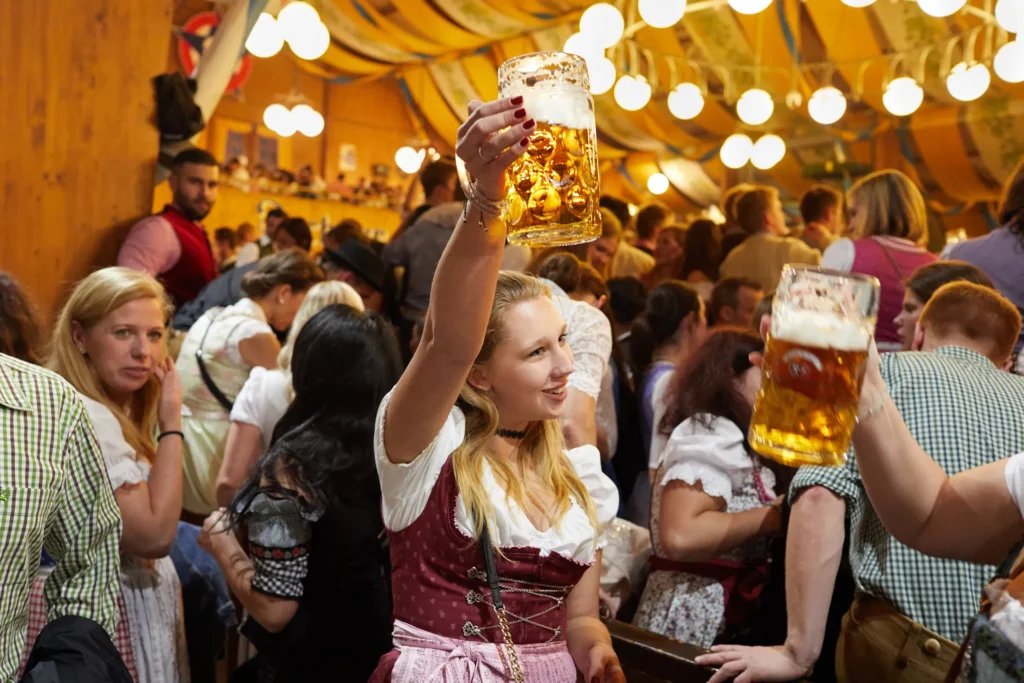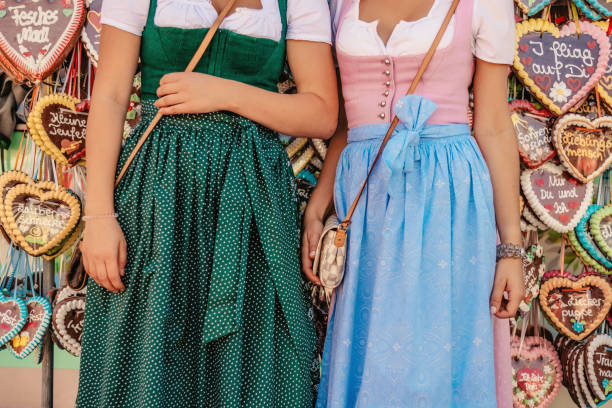New Dirndls: Absolutely Lowest Prices for You
Dirndls are more than just a dress; they embody a rich cultural history and have evolved into a symbol of tradition, femininity, and style.
Originating from the Alpine regions of Germany and Austria, the dirndl has undergone significant transformations over the years, adapting to changing fashion trends while retaining its cultural significance.
This post explores the history, design elements, and modern interpretations of dirndls, along with tips on how to wear them stylishly.

The Historical Roots of Dirndls
Origins in Rural Life
The dirndl’s history dates back to the 18th century when it was worn by peasant women as practical work attire. Initially designed for functionality, these dresses were made from durable fabrics suitable for labor-intensive tasks on.
The term “dirndl” itself is derived from “Diernen,” referring to maids who worked in Bavarian and Austrian. Over time, the dirndl transitioned from a simple work garment to a recognized folk costume, known as Tracht in German.
Evolution Through the Ages
As society progressed, so did the dirndl. By the late 19th century, it began to gain popularity among the upper classes who adopted it as a fashionable attire during summer retreats in the Alps. This shift marked a fusion of traditional designs with luxurious materials such as silk and lace, leading to more fitted silhouettes that emphasized feminine curves.
Despite its decline in popularity post-World War II due to its association with nationalist sentiments, the dirndl experienced a resurgence in the 1990s as a celebration of cultural heritage.
The Anatomy of a Dirndl
Key Components
A traditional dirndl typically consists of several key elements:
- Bodice: A close-fitting bodice often featuring a low neckline.
- Blouse: Worn underneath the bodice, usually white with puffed sleeves.
- Skirt: High-waisted and wide, available in various lengths.
- Apron: A contrasting piece tied around the waist that adds both style and functionality.
These components can vary significantly based on regional styles and personal preferences, reflecting local traditions and modern fashion trend.
Color Meanings and Symbolism
The colors and patterns of dirndls also carry meanings. For example:
- Red: Often symbolizes love and passion.
- Green: Represents hope and nature.
- Blue: Associated with tranquility and peace.
Choosing specific colors can convey different messages about the wearer’s personality or mood.
Modern Interpretations of Dirndls
Fashion Meets Tradition
Today, dirndls are not just reserved for Oktoberfest or traditional events; they have found their way into mainstream fashion. Designers create contemporary versions that incorporate modern fabrics, patterns, and embellishments while still honoring traditional craftsmanship. Mini dirndls in vibrant colors have become popular among tourists seeking a taste of Bavarian culture.
Styling Tips for Wearing Dirndls
To wear a dirndl stylishly:
- Choose the Right Fit: Ensure your dirndl fits well around the bodice without being too tight or loose.
- Accessorize Thoughtfully: Pair your dirndl with traditional accessories like a decorative brooch or matching jewelry.
- Footwear Matters: Opt for comfortable yet stylish shoes; traditional options include flats or low heels.
- Consider Occasion: For casual outings, lighter fabrics and simpler designs work well; for formal events, choose richer materials with intricate details.
The Cultural Significance of Dirndls
A Symbol of Identity
Wearing a dirndl is often seen as an expression of cultural identity. It connects individuals to their heritage and celebrates regional customs. During festivals like Oktoberfest, dirndls play a crucial role in showcasing Bavarian pride and unity46.
Dirndls in Popular Culture
Dirndls have also made appearances in popular culture, from films to fashion runways. Their representation often highlights themes of nostalgia and femininity, making them appealing across different demographics. This visibility has contributed to their ongoing popularity beyond traditional settings.
Conclusion

Dirndls are much more than garments; they are woven into the fabric of cultural history and identity. From their humble beginnings as work attire for peasant women to their status as fashionable pieces embraced by contemporary society, dirndls continue to evolve while retaining their essence.
Whether worn during festive occasions or incorporated into everyday fashion, these dresses celebrate both tradition and modernity.In summary, understanding dirndls involves appreciating their historical significance, recognizing their design elements, and embracing their role in contemporary fashion.
As you explore this beautiful garment, remember that each dirndl tells a story—one that reflects not only personal style but also cultural heritage.
